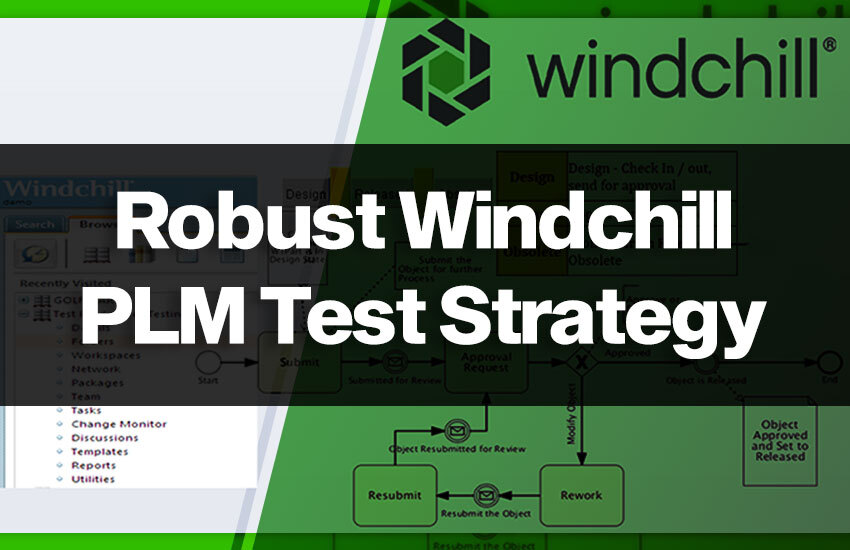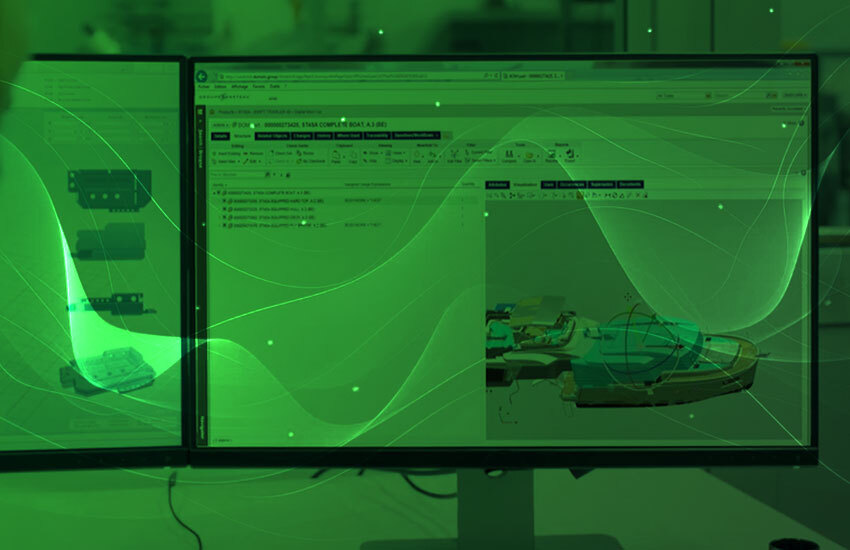
Windchill, PTC's industry-leading product lifecycle management (PLM) system, empowers businesses to streamline product development from conception to end-of-life. But implementing a powerful PLM solution like Windchill requires a well-defined testing strategy.
Today, companies are increasingly reliant on robust Product Lifecycle Management (PLM) systems to streamline their operations, manage data efficiently, and enhance product development processes. Among the many PLM solutions available, PTC Windchill stands out as a powerful and versatile tool for managing the entire lifecycle of products from conception to retirement. However, to fully leverage the capabilities of Windchill PLM, it's crucial to develop a comprehensive and effective test strategy. A robust test plan ensures a smooth Windchill deployment, minimizes disruptions, and unlocks the full potential of the system.
Find out what challenges can come your way while performing Windchill PLM testing through our blog post, Key Challenges in Windchill PLM Testing and How to Overcome Them!
This blog post, brought to you by Modelcam Technologies, a leading PLM consultant and service provider in India, outlines 5 crucial steps to building a comprehensive Windchill PLM test strategy.

Before diving into the specifics of testing, it's imperative to establish clear objectives and requirements. Start by understanding what you aim to achieve with your Windchill PLM implementation. Whether you are focusing on windchill configuration management, integration with existing systems, or ensuring the system meets specific business needs, defining these objectives will guide your testing process.
Identify Stakeholders: Engage with all relevant stakeholders, including PLM consultants, end-users, and IT teams, to gather comprehensive requirements.
Establish Success Criteria: Define what success looks like for each objective, such as improved data accuracy, reduced time-to-market, or enhanced collaboration.
By setting clear goals, you can tailor your test strategy to ensure that the PTC Windchill PLM system meets all expectations and delivers tangible benefits.
With objectives and requirements in hand, the next step is to develop a detailed test plan. This plan should outline the scope of testing, methodologies, resources needed, and timelines. A well-structured test plan will help you systematically evaluate the Windchill PLM system and ensure that all aspects of the PLM process are thoroughly examined.
Test Scenarios: Identify and document test scenarios based on real-world use cases and requirements. This includes testing windchill configuration management, integration points, and user interfaces. Create realistic scenarios that mimic real-world usage of Windchill. This could involve simulating a typical product development process, from creating a new product concept to managing revisions and approvals.
Test Cases: Develop detailed test cases for each scenario, specifying the input data, expected results, and execution steps. Break down each testing goal into smaller, testable units. For example, a test case for document management might involve uploading a specific file type, searching for documents based on keywords, and checking out/in documents.
Resources and Timeline: Allocate necessary resources, including personnel and tools, and establish a timeline for each testing phase.
A comprehensive test plan ensures that all aspects of the Windchill PLM system are covered, from core functionalities to specific configurations and integrations.
With your test plan in place, it's time to implement rigorous testing methods. Effective testing involves multiple techniques to validate different aspects of the Windchill PLM system, ensuring that it meets both functional and non-functional requirements. The right testing tools can significantly streamline the Windchill PLM testing process.
Manual Testing: While time-consuming, manual testing remains essential for activities like user interface (UI) testing and usability evaluation.
Automated Testing: Leverage automation tools to automate repetitive tasks like regression testing, ensuring consistency and reducing testing time.
Defect Tracking Tools: Implement a defect tracking system to capture and manage bugs discovered during testing. This facilitates communication between testers and developers for timely resolution of issues.
Unit Testing: Test individual components or modules of the Windchill PLM system to ensure they function correctly in isolation.
Integration Testing: Verify that different modules and systems integrate seamlessly and that data flows correctly between them.
User Acceptance Testing (UAT): Involve end-users to validate that the system meets their needs and is user-friendly.
Performance Testing: Assess the system's performance under various conditions to ensure it can handle the expected load and performance requirements.
By employing a variety of testing methods, you can ensure that the Windchill PLM system is robust, reliable, and ready for deployment.
Testing is an ongoing process. Continuously monitor the performance of the Windchill PLM system and refine your testing strategy based on feedback and results. This iterative approach helps in identifying and addressing issues promptly, ensuring that the system remains aligned with evolving business needs. Testing is an iterative process. Based on the initial test results, you may need to refine your test plan:
Review and Prioritize Defects: Prioritize identified defects based on their severity and potential impact.
Fix Defects and Retest: Work with developers to resolve high-priority defects and retest the affected functionalities.
Update Test Plan: Continuously update your test plan to reflect changes made to the Windchill system or your testing objectives.
Gather Feedback: Collect feedback from users and stakeholders to identify any issues or areas for improvement.
Analyze Results: Review test results and metrics to identify trends or recurring issues.
Regular monitoring and refinement ensure that the Windchill PLM system remains effective and continues to meet business objectives.
Navigating the complexities of Windchill PLM can be challenging, especially without the right expertise. Engaging with experienced PLM services in India, such as those offered by Modelcam Technologies, can provide valuable insights and support throughout the testing process.
Expertise: PLM consultants bring deep knowledge of Windchill and can offer tailored solutions and recommendations.
Best Practices: Leverage industry best practices for PLM lifecycle management and testing strategies.
Support: Receive ongoing support and guidance to address any challenges or issues that arise.
Partnering with PLM experts ensures that you have the support needed to successfully implement and test your Windchill PLM system, ultimately leading to a more efficient and effective product lifecycle management process.
Explore our blog, 20% Increase in Product Quality with Improved Windchill PLM Testing to find out how Windchill PLM testing improves product quality!
Building a robust Windchill PLM test strategy involves a systematic approach that starts with defining clear objectives and requirements, followed by developing a detailed test plan, implementing rigorous testing methods, continuously monitoring and refining, and leveraging expert PLM services. By following these five steps, organizations can ensure that their Windchill PLM system is well-tested, reliable, and aligned with their business goals.
Effective testing not only helps in achieving a smooth implementation but also maximizes the value derived from the Windchill PLM system, leading to enhanced product development processes and improved overall performance. For more guidance on developing a robust PLM test strategy and leveraging Windchill PLM, consider reaching out to experts like Modelcam Technologies for tailored PLM solutions and services.
Let’s connect: www.modelcamtechnologies.com
Email: sales@modelcamtechnologies.com
Mobile no : +91 8237016167
©Copyright 2025. All rights reserved by Modelcam Technologies Private Limited PUNE.